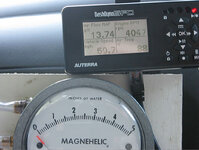I'd looked at couple of scoops available but wasn't really impressed with what you actually got for a starting price of around £100 so I decided to take a shot at making one, I've seen a few made of of alu sheets and fibreglass neither of which looked great. I just happened to have a lower engine tray sat in the garage (after having to replace it thanks to a low kerb). After a bit of cutting, heating and bending I ended up with this

I had a bit of CF effect wrap left and it finished it off ok.

Not a perfect finish and it's not fitted yet either, not even sure if i'll use it or not but for 45mins effort it worked out ok

I had a bit of CF effect wrap left and it finished it off ok.

Not a perfect finish and it's not fitted yet either, not even sure if i'll use it or not but for 45mins effort it worked out ok

